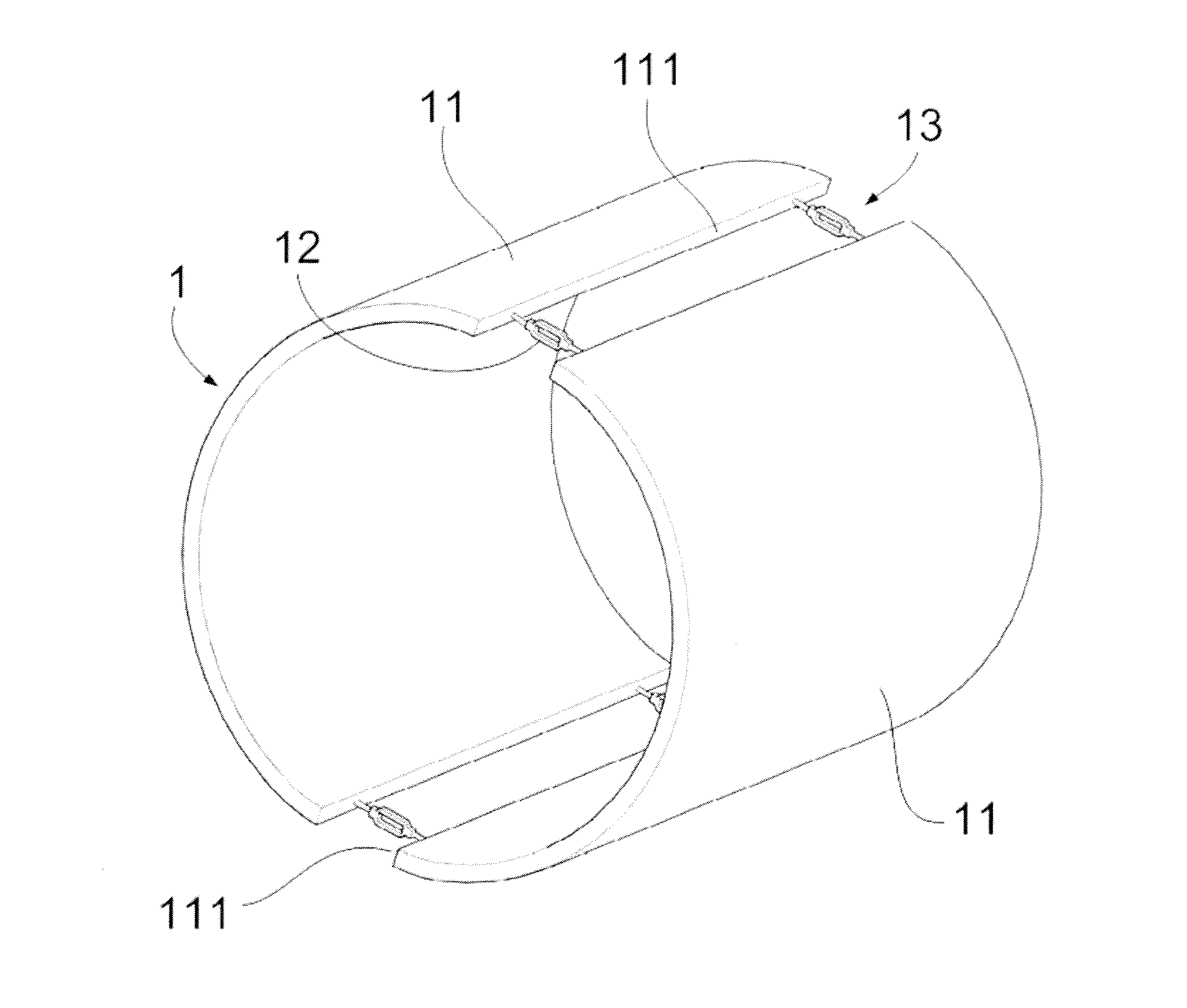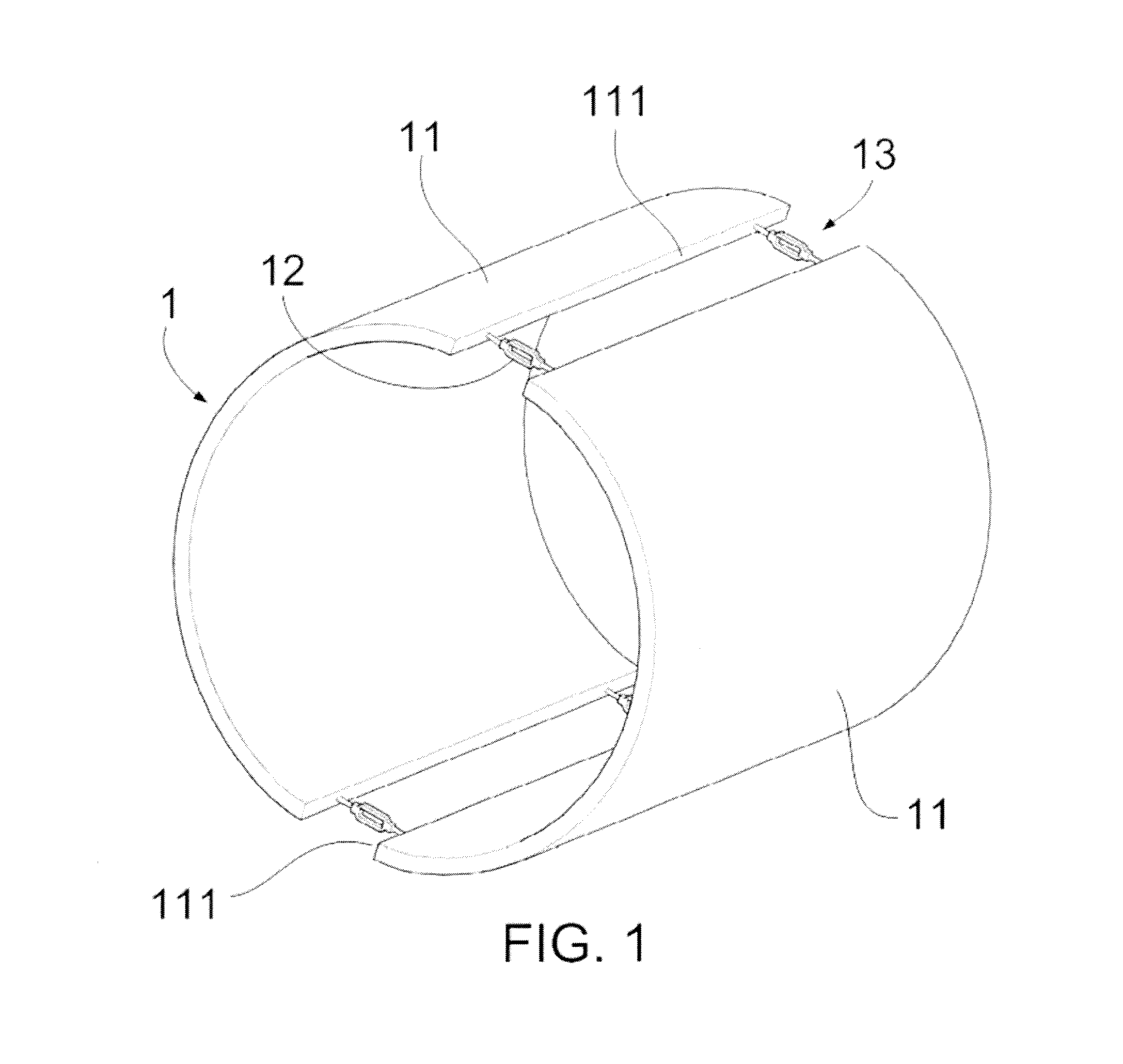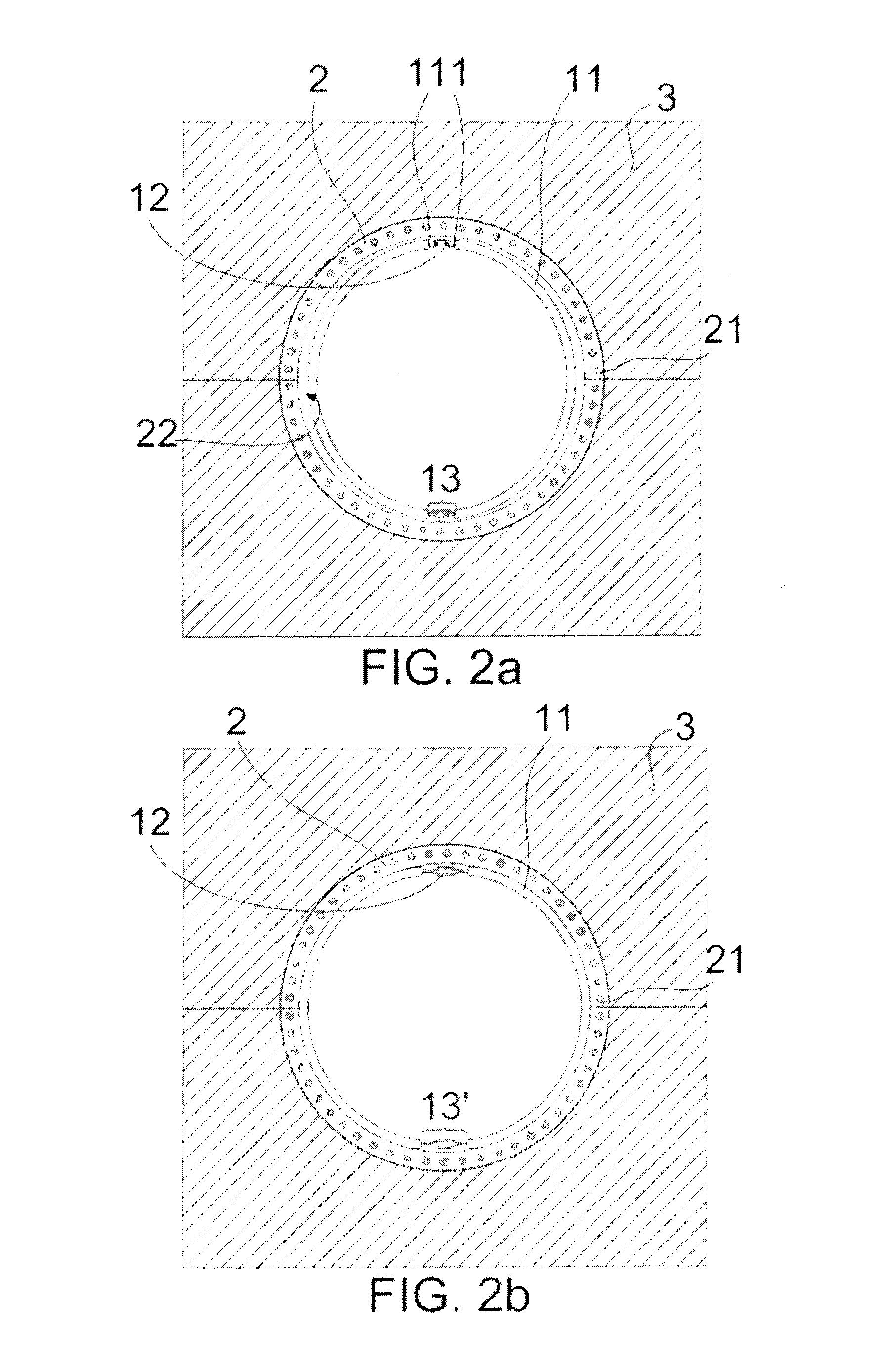Anti-Ovalization Tool for Introduction Into a Wind Turbine Blade Root and Method of Reducing Ovalization of a Wind Turbine Blade Root
a technology of wind turbine blades and root, which is applied in the direction of propellers, water-acting propulsive elements, lamination, etc., can solve the problems of insufficient resin cure, blades may still be relatively soft, and composite materials may not have the structural integrity to provide a secure fixing mechanism, etc., to achieve the effect of reducing unwanted deformation
- Summary
- Abstract
- Description
- Claims
- Application Information
AI Technical Summary
Benefits of technology
Problems solved by technology
Method used
Image
Examples
Embodiment Construction
[0032]FIG. 1 shows a perspective view of an anti-ovalization tool according to a first embodiment. The anti-ovalization tool 1 may comprise two substantially semi-cylindrical rigid bodies 11. The rigid bodies 11 may be connected to each other by their side edges 111 with four turnbuckles 12, leaving two gaps 13 in between them. Together the rigid bodies 11 may form a substantially cylindrical body and their side edges 111 may extend parallel to a central axis of the cylinder.
[0033]It should be noted, that in other implementations, the tool may comprise more than two rigid bodies. In such cases the rigid bodies may form together a substantially cylindrical body leaving more than two gaps in between their side edges. In other implementations, such gaps may be filled with a deformable material. In further embodiments, naturally a different number of turnbuckles may be used.
[0034]It is noted that by adjusting the distances between the side edges of the rigid bodies, the shape of the too...
PUM
| Property | Measurement | Unit |
|---|---|---|
| thickness | aaaaa | aaaaa |
| length | aaaaa | aaaaa |
| distances | aaaaa | aaaaa |
Abstract
Description
Claims
Application Information
 Login to View More
Login to View More - R&D
- Intellectual Property
- Life Sciences
- Materials
- Tech Scout
- Unparalleled Data Quality
- Higher Quality Content
- 60% Fewer Hallucinations
Browse by: Latest US Patents, China's latest patents, Technical Efficacy Thesaurus, Application Domain, Technology Topic, Popular Technical Reports.
© 2025 PatSnap. All rights reserved.Legal|Privacy policy|Modern Slavery Act Transparency Statement|Sitemap|About US| Contact US: help@patsnap.com



